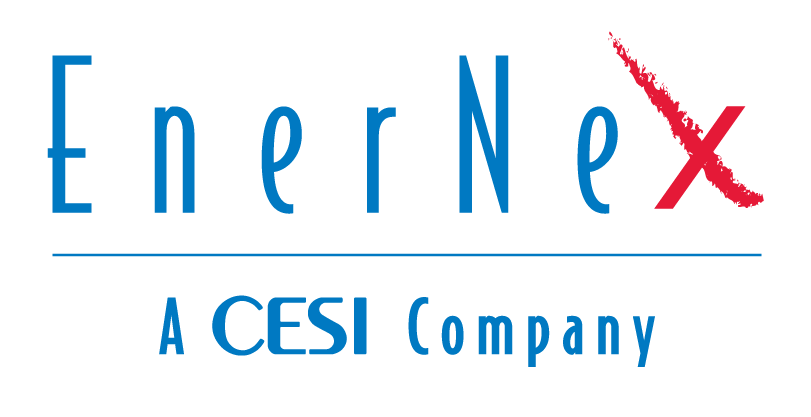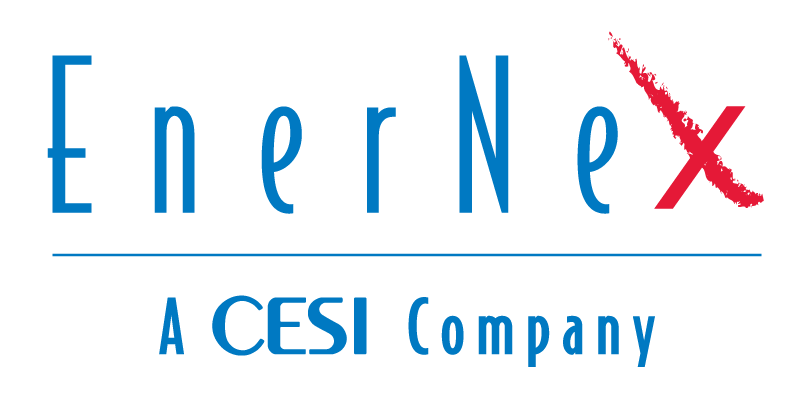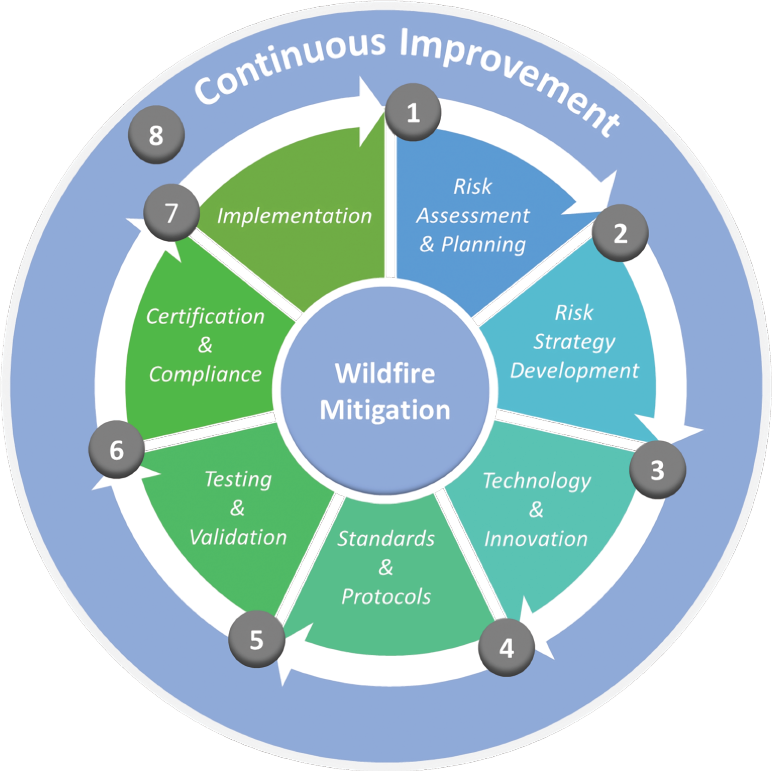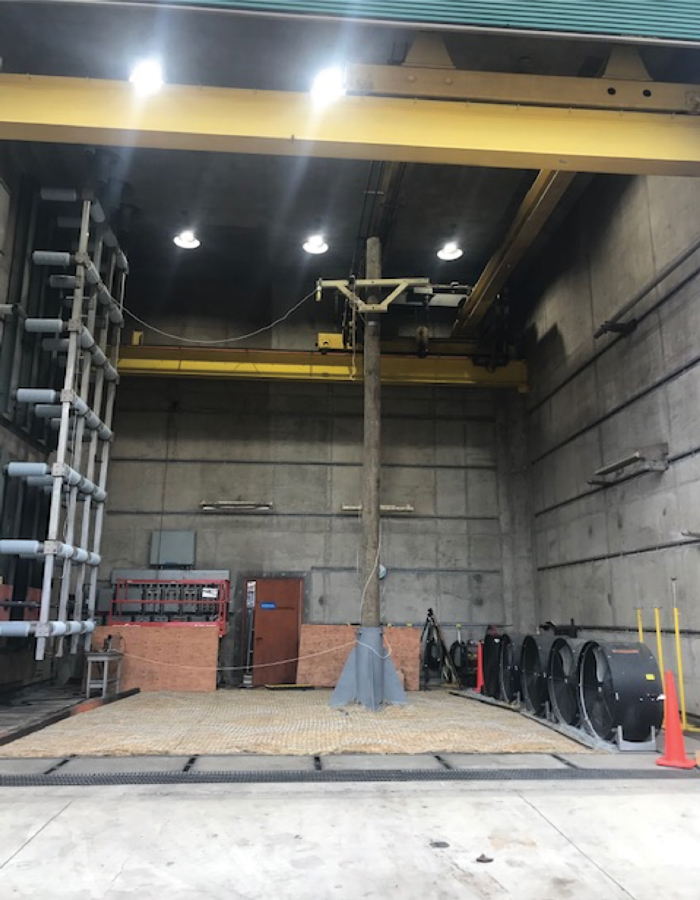As originally posted in EE T & D Magazine
Wildfires are increasing in frequency and intensity, particularly in regions like California, posing significant challenges to the electric sector. Addressing these challenges requires a well-structured and strategic approach to wildfire mitigation. This article outlines a series of steps essential for enhancing grid resilience and ensuring public safety, focusing on the collective expertise and methodologies that can be adopted to manage and mitigate these risks effectively.
1. Risk assessment and planning: Understanding our current context
Effective wildfire mitigation begins with comprehensive risk assessment and planning. This can be achieved by utilizing advanced data analytics and environmental monitoring tools, such as Predictive Analytics Geographic Information Systems (GIS). These tools are crucial for identifying high-risk areas, modeling fire behavior and potential vulnerabilities within the grid infrastructure. Thorough assessments are needed to evaluate the condition and placement of electrical infrastructure, which are vital in mitigating ignition risks. These efforts should be integrated into broader planning strategies that include data management, vegetation management, and proactive safety measures such as Public Safety Power Shutoff (PSPS) initiatives to prepare for and lessen potential wildfire risks.
2. Strategy development: Crafting our strategic plan
Developing a strategy is crucial to wildfire mitigation. One engineering consulting firm has collaborated with a major utility on the West Coast to form a specialized IT Design Office. This office is tasked with overseeing and managing a comprehensive suite of grid resiliency programs. By adopting this strategic approach, resources can be optimally allocated, leveraging predictive models and historical data.
3. Technology and innovation: Enhancing capabilities through innovation
Technological innovations play a fundamental role in advancing wildfire mitigation strategies. Predictive modeling and climate assessments, facilitated by digi-tal twin technology, are at the forefront of forecasting and managing wildfire behaviors. These technologies are crucial for real-time asset management and grid hardening, providing utilities with insights into potential vulnerabilities and opportunities for strategic intervention. Incorporating these innovative tools enables more accurate forecasting of wildfire risks and enhances the effectiveness of mitigation measures.
4. Standards & protocols: Ensuring interoperability and compliance
Standards and protocols are essential in ensuring that all technologies and processes used in wildfire mitigation are interoperable and comply with industry norms. This includes rigorous adherence to safety and performance standards, which are critical in validating the effectiveness of mitigation strategies under real-world conditions. The development of architectures and management of grid resiliency programs involve ensuring that all components and strategies adhere to these crucial standards and protocols, facilitating seamless integration and functionality across different systems and technologies.
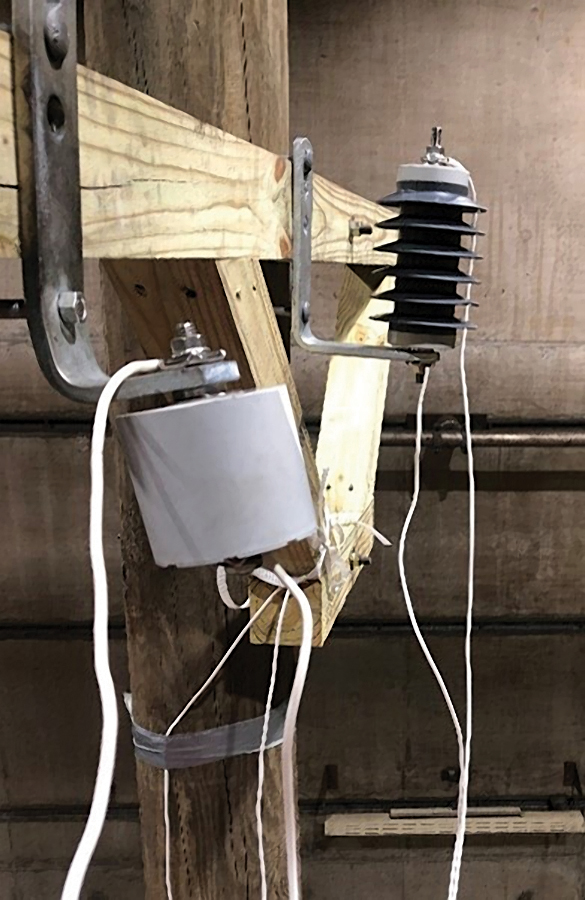
5. Testing and validation: Ensuring applicability and effectiveness
Testing and validation are crucial components of wildfire mitigation, ensuring that equipment not only meets technical safety standards but also complies with stringent regulatory and policy requirements. KEMA Labs’ rigorous testing protocols, such as the CAL Fire exemption tests, play a pivotal role in demonstrating the safety and effectiveness of wildfire mitigation equipment under extreme conditions.
For instance, devices like the surge arrester with disconnect are subjected to rigorous conditions to verify their effectiveness in preventing ignition in high-risk areas. Figure 1 demonstrates the type of equipment and method of testing to ensure that each component not only meets but exceeds the necessary safety standards for wildfire mitigation. These tests are essential for certifying devices like fire protection disconnectors, ensuring they can effectively prevent the ignition of flammable materials around electrical infrastructure. Successfully passing these tests allows such devices to be certified for use in high-risk areas, aligning with both state and federal regulations aimed at reducing wildfire risks.
In addition to individual equipment tests, comprehensive testing setups like the one pictured in Figure 2 are essential for simulating real-world conditions and ensuring the overall effectiveness of wildfire mitigation strategies. Centered in the photo is a pole equipped with the arrester and disconnect; to the left, the supply connection that powers the setup; on the right, the fans used to simulate wind conditions during testing; and at the bottom, a fuel bed that mimics the ground materials found in wildfire-prone areas. This setup allows for a holistic testing environment that ensures every component functions as expected under the most challenging conditions.
At the policy level, manufacturers must navigate a complex regulatory landscape that dictates everything from equipment design to performance benchmarks. Past disasters, ongoing research and
a pressing need to address public safety
and environmental concerns often shape these policies. Manufacturers must ensure that their products not only adhere to current safety and environmental standards but are also capable of meeting the requirements of anticipated
regulatory changes. This proactive engagement with policy and regulatory frameworks helps manufacturers design and produce equipment that is effective at mitigating wildfires and compliant with ever-evolving standards. It ensures
that third-party products can sustainably serve the needs of utilities, help utilities meet their compliance obligations and contribute to broader public safety and environmental objectives.
6. Certification and compliance: Establishing trust through certification
Implementing wildfire mitigation strategies involves the deployment of carefully developed and tested technologies and procedures. This stage is critical for applying theoretical plans in practical settings, including the integration of certified equipment and the activation of emergency preparedness protocols. The process of obtaining appropriately accredited equipment and technically sound testing procedures ensures that all prepared measures function cohesively to enhance the resilience of electrical grids and improve the readiness of communities and utility services in responding effectively to wildfire emergencies.
7. Implementation: Executing the plan
The practical application of developed strategies and technologies is critical. This phase includes the deployment of certified equipment and the execution of comprehensive emergency preparedness plans. It is essential to ensure that mitigation strategies are implemented and integrated across various grid resiliency projects effectively.
8. Continuous improvement: Advancing the approach
Continuous improvement in wildfire mitigation is not merely a recommendation — it is a necessity. As conditions change and new data becomes available, utilities must reassess and refine their strategies to ensure their strategic procedure remains effective. The comprehensive graphic illustrates the sequential framework for effective wildfire mitigation across utility services. By continually refining and updating wildfire mitigation strategies, utilities not only address the immediate challenges posed by increasingly frequent and intense wildfires but also enhance the long-term resilience and safety of electric grids, keeping pace with evolving environmental and technological landscapes.
Addressing the complex challenges of wildfire mitigation requires a disciplined approach, encompassing several critical stages of planning and execution. Initially, the focus is on understanding the risk landscape through comprehensive assessment and strategic planning. Establishing a firm foundation supports the development of targeted strategies that leverage innovative technologies to predict and manage wildfire risks effectively. During the middle stages, the targeted strategies undergo rigorous testing and validation to ensure they meet high safety and performance standards. Finally, these strategies are put into action in the implementation phase, closely followed by continuous monitoring and iterative improvements to adapt to new insights and evolving conditions. Throughout the steps of testing and implementation, the integration of specialized expertise is crucial in refining and advancing wildfire mitigation strategies to enhance grid resilience and public safety effectively.
Meet Our Authors
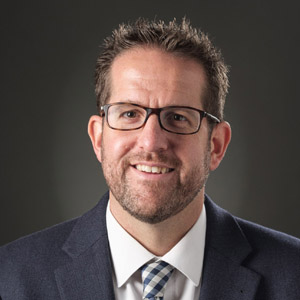
Neil Placer serves as the director of Utility Consulting Services at EnerNex, bringing over two decades of specialized expertise in the electric utility sector. His contributions at EnerNex have significantly impacted major projects, including the development of grid resiliency architectures and leading grid modernization efforts for several large utilities in the United States.

Michele Pastore, chief business strategy officer at EnerNex, excels in strategy, company management and business development. His experience spans engineering, design, and operations of renewable and traditional generating facilities, as well as transmission and distribution infrastructure – with projects across North and Central America, Europe, the Middle East and Africa.
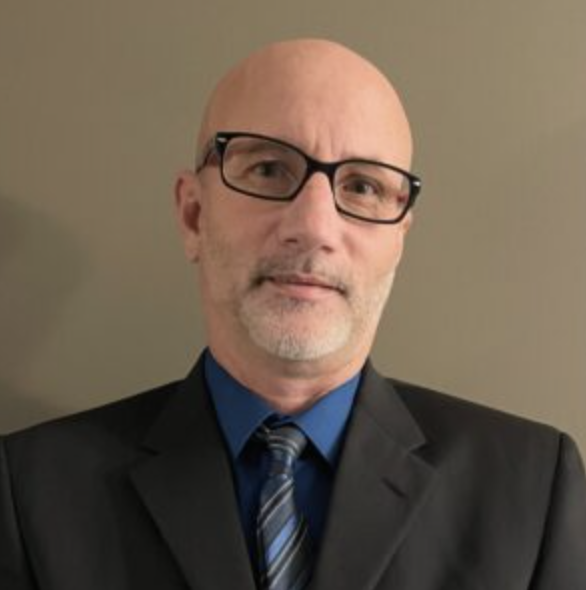
Matthew Muthard is an accomplished electrical engineer and area manager for North America at KEMA Labs, a role he has held since March 2020. With a robust career spanning over 27 years, Muthard has demonstrated profound expertise and leadership in the engineering sector. He holds a Bachelor of Science in electrical engineering from Pennsylvania State University.

Jeff Hildreth is the lab director at the KEMA Labs location in Chalfont, Pennsylvania. Before joining KEMA, Hildreth worked for more than two decades in the electric utility industry, specializing in laboratory and field commissioning of power system equipment.
